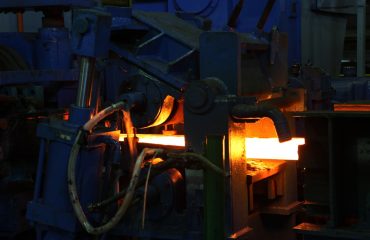Steel, the backbone of countless structures and machines, demands rigorous quality control. Ensuring its integrity is paramount for safety and longevity. Ultrasonic testing (UT) has emerged as a cornerstone of non-destructive testing (NDT) methods, offering a powerful and precise way to inspect steel for internal flaws and defects. This detailed guide explores the intricacies of ultrasonic testing in steel inspection, covering its principles, techniques, and applications.
The Physics Behind Ultrasonic Testing
Ultrasonic testing leverages high-frequency sound waves, typically beyond the range of human hearing (above 20 kHz), to probe the internal structure of materials. A transducer, acting as both a transmitter and receiver, emits ultrasonic pulses into the steel. These pulses travel through the material, reflecting off interfaces such as material boundaries, inclusions, or cracks. The time it takes for these echoes to return to the transducer, along with their amplitude, provides crucial information about the location, size, and nature of any defects present. The principle relies on the difference in acoustic impedance between the steel and the defect. A significant impedance mismatch leads to a strong reflection, allowing for easy detection.
Common Ultrasonic Testing Techniques for Steel
Several ultrasonic testing techniques are employed for steel inspection, each tailored to specific needs and types of defects. Pulse-echo is the most common technique. It involves sending a single pulse and analyzing the returning echoes. Through-transmission utilizes two transducers, one transmitting and the other receiving, detecting the reduction in signal strength caused by defects. Pitch-catch uses separate transducers for transmitting and receiving, allowing for improved defect localization. The choice of technique depends on factors like the geometry of the component, the type of expected defects, and the required level of detail.
Identifying and Characterizing Defects in Steel using UT
Ultrasonic testing excels at detecting a wide range of defects in steel, including:
- Cracks: Surface cracks, subsurface cracks, and internal cracks are readily detectable through their characteristic reflections.
- Porosity: Small voids or pores within the steel structure create scattering of ultrasonic waves, revealing their presence.
- Inclusions: Foreign materials trapped within the steel during its manufacturing process can be identified through changes in acoustic impedance.
- Laminations: These are planar defects, often caused by rolling processes, which can be detected by their strong reflections.
- Corrosion: While not directly detected, UT can reveal the extent of material loss due to corrosion by assessing the remaining thickness.
Beyond detection, UT provides valuable information about the size, orientation, and shape of defects. This detailed characterization is crucial for assessing the structural integrity of the steel component and determining the appropriate remedial action.
Advantages and Limitations of Ultrasonic Testing in Steel Inspection
Ultrasonic testing offers several advantages over other NDT methods. It’s highly sensitive, capable of detecting small subsurface defects. It provides accurate depth information and allows for relatively quick inspection of large components. It’s also versatile, adaptable to various steel types and geometries. However, UT does have limitations. Surface roughness can interfere with signal transmission. Complex geometries can make interpretation challenging. Highly attenuating materials may limit penetration depth. Operator skill and experience are crucial for accurate interpretation of results.
Applications of Ultrasonic Testing in Steel Industries
The versatility of ultrasonic testing makes it indispensable across various steel industries. It plays a vital role in:
- Manufacturing Quality Control: Ensuring the integrity of steel products during and after manufacturing processes.
- Construction and Infrastructure: Inspecting welds, reinforcing bars, and other steel components in bridges, buildings, and pipelines.
- Aerospace and Automotive: Inspecting critical steel components in aircraft and vehicles to ensure safety and reliability.
- Pressure Vessel Inspection: Detecting flaws in pressure vessels to prevent catastrophic failures.
- Oil and Gas Industry: Inspecting pipelines, storage tanks, and other steel structures for defects that could compromise safety and operational efficiency.
The application of advanced UT techniques, combined with sophisticated data analysis software, is continually improving the accuracy and efficiency of steel inspection, leading to improved safety and reduced maintenance costs.
In conclusion, ultrasonic testing is a powerful and indispensable tool for ensuring the integrity of steel components across numerous industries. Its ability to detect subsurface flaws, provide accurate depth information, and adapt to various geometries makes it a vital component of modern non-destructive testing practices.
SEO Tags:
- Ultrasonic Testing Steel
- Non-Destructive Testing Steel
- Steel Inspection Techniques
- Ultrasonic Flaw Detection
- NDT for Steel Quality Control




